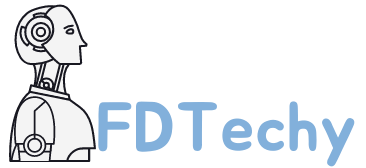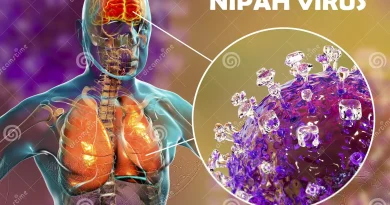What Is the American Cancer Society Doing about Breast Cancer?
The American Cancer Society doing well about breast cancer.
With a dedicated team of volunteers and staff, the American Cancer Society is leading the fight for a world without breast cancer and for all cancers. Patient and Caregiver Services the American Cancer Society provides patients and caregivers with resources that can help improve and even save lives. From free rides to treatments and other cancer-related appointments, a place to stay.
Breast Cancer Facts and Figures
Caring for cancer information trained American Cancer Society staff gives Society programs and services on the website. They connect people with a breast cancer diagnosis, health insurance assistance, and answers about American Cancer Society programs on the website. Provides reliable and accurate breast cancer information and news regarding the Services, including current information. About treatments and side effects, and nearby programs and services.
They also help other people.
They also help people who speak languages other than English or Spanish find help. People can visit cancer.org/breastcancer for information about every aspect of the breast cancer experience. From rescue to survival. They also publish a variety of pamphlets and books covering topics ranging from patient education, quality of life, and care issues to healthy living.
Programs and Services Survivorship.
American Cancer Society Survivorship’s work aims to support people. Who lives with and beyond cancer from diagnosis to end-of-life long-term survival. what’s more, Focused on helping survivors understand and access treatment. further Their ongoing physical management, psychological, and functional problems, and engagement in healthy behaviors to improve their well-being.in addition, Our posttreatment survivorship care guidelines are designed to promote the health and quality of life of survivors.
Cancer Survivorship Resource.
Through the National Cancer Survivorship Resource Center, funded by the Centers for Disease Control and Prevention through a collaboration between the American Cancer Society and George Washington University Cancer, they developed Cancer Survivorship eLearning for primary care providers. Made a series. The free e-learning program is designed to teach clinicians how to care for survivors of adult-onset cancer.
Support for carers
Approximately 7% of the US population is a family caregiver of a loved one with cancer and is committed to meeting their needs for information, education, and support. About 4% of the US population survives cancer, meaning that family caregivers are nearly twice the proportion of cancer survivors, supporting the notion that cancer is not isolated to the individual diagnosed. Rather, it affects the entire family unit and network of close friends.
Caregivers
Caregivers have our Caregiver Resource Guide, which can help them learn to care for themselves as a caregiver, better understand what their loved one is going through,
Help navigate the health care system.
The cancer journey and learning how to navigate the healthcare system can be overwhelming for anyone. Especially difficult for those who are medically underserved, and those with language or health barriers. Barriers to literacy, and those with limited resources. The American Cancer Society Patient Navigator Program reaches those who need it most.
Breast Cancer Support
The American Cancer Society’s Reach to Recovery program pairs trained volunteers with breast cancer patients to help them with everything. Besides, from practical and emotional issues to the disease, treatment, and long-term survivorship. Furthermore, Provide peer-to-peer support on the object. Similarly, Breast Cancer Facts and Figures Finding Hope and Inspiration Women with breast cancer and their loved ones do not have to face their experiences alone.
The American Survivors Network provides a safe online.
The American Cancer Society Cancer Survivors Network provides a safe online connection. Where cancer patients and caregivers can find others with similar experiences and interests. Other online resources, including Springboard Beyond Cancer and Belong, are provided. enable additional support for patients, survivors, and caregivers. do well better communication to get help during and after cancer.
transportation for treatment
Lack of transportation can be the biggest barrier to treatment. That’s why the American Cancer Society launched the Road to Recovery program. Moreover, It is at the heart of work to remove barriers to quality health care by providing transportation to patients for treatment through volunteer drivers, partners, or community organizations. Other transportation programs are also available in certain areas.
stay during treatment
The American Cancer Society Hope Lodge program provides a free home away from home for cancer patients and their caregivers. More than just a roof over their heads, it’s a nurturing community that helps patients access the care they need. Through our Hotel Partners Program, we also partner with local hotels across the country to provide free or discounted lodging for patients and their caregivers who can make frequent visits for treatment appointments.
Hair loss and mastectomy products
The American Cancer Society “TLC” Tender Living Care publication offers affordable hair loss and mastectomy products for women dealing with cancer, as well as advice on how to use these products. Products include wigs, hairpieces, hats, turbans, and breast forms, as well as mastectomy bras, camisoles, and swimwear.
Post-treatment support
The end of breast cancer treatment does not mean the end of the cancer journey. Cancer survivors may experience long-term or late effects as a result of the disease or its treatment.
Life after Physicians research.
Treatment
The next chapter of Your Survivorship Journey Guide Can Help Cancer.
Survivors as they embark on the next leg of their journey. The American Cancer Society also has a follow-up care guideline for breast cancer survivors. That is based on available evidence, surveillance guidelines, and standard clinical practice to facilitate the delivery of a high level of follow-up care.
Designed Quality, standard, medical care,
Primary Care Providers 216 Breast cancer guidelines on assessment and management of potential long-term and late effects, as well as health promotion, surveillance for recurrence, screening for other primary cancers, and coordination of care between specialists and primary care also tell.
Research
Research is at the heart of the American Cancer Society’s mission. We invest more in breast cancer research than any other type of cancer. Our funded research has led to the development of potentially life-saving breast cancer drugs such as tamoxifen and Herceptin, as well as a better understanding of the genes associated with breast cancer. Ongoing research studies span the continuum of cancer from prevention and early detection to treatment and beyond.




